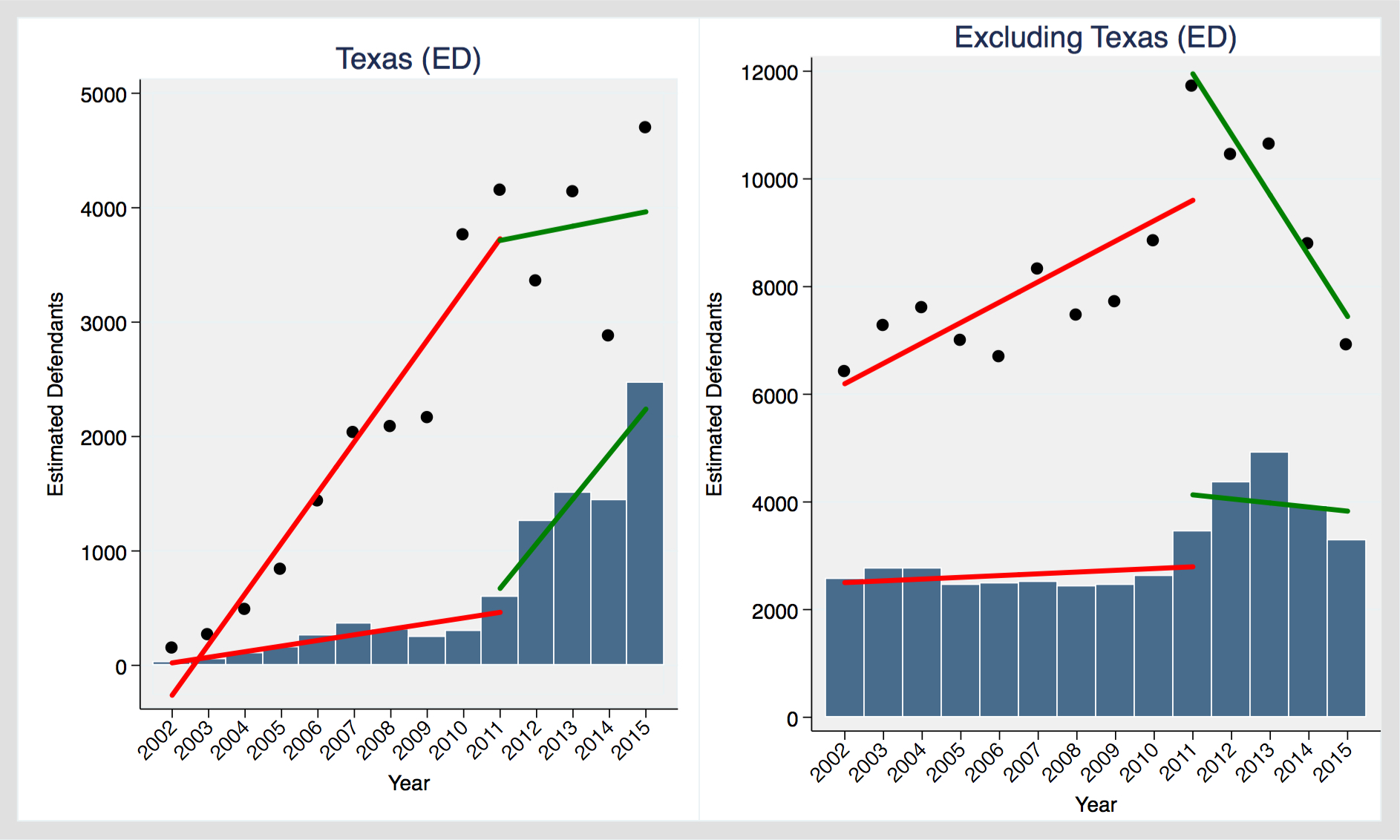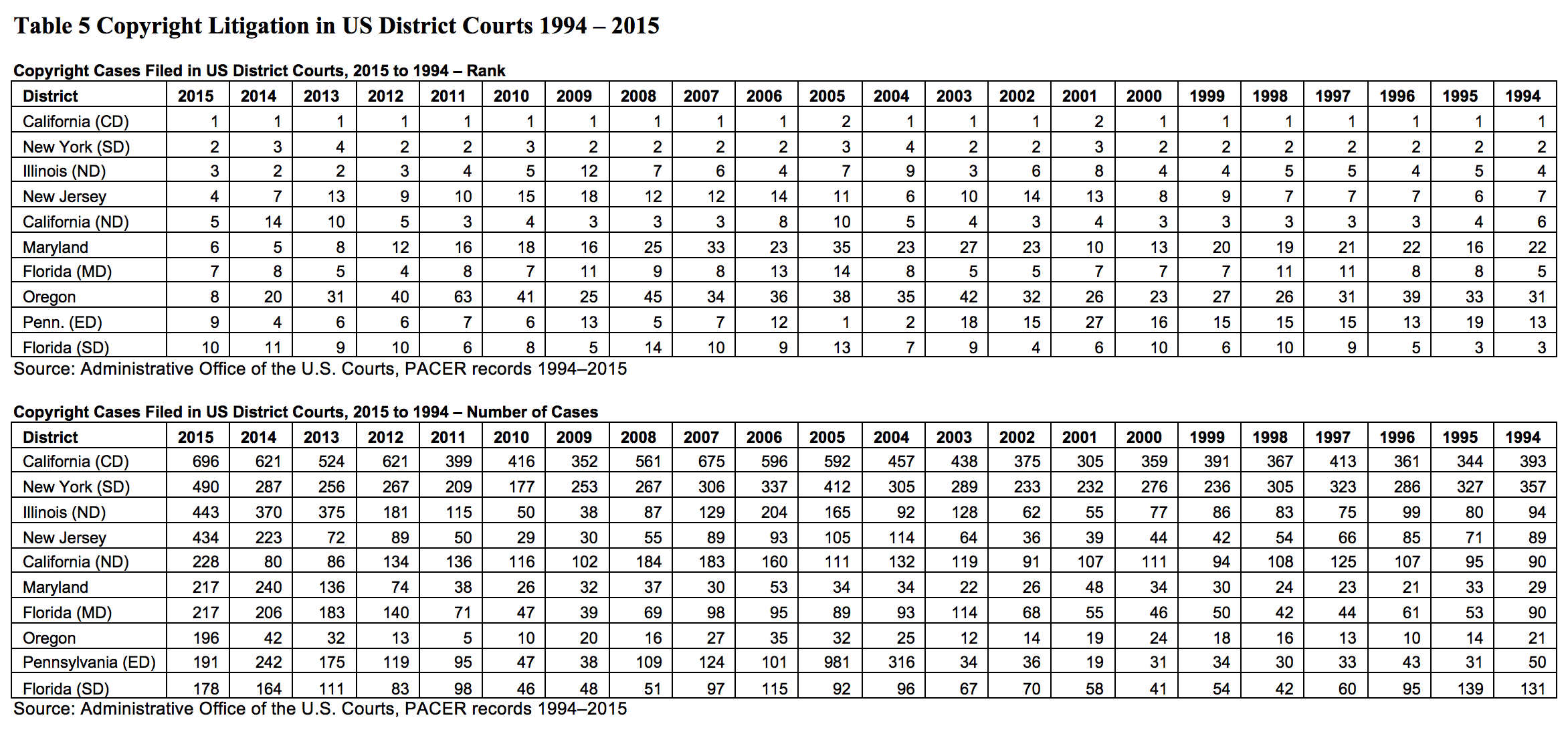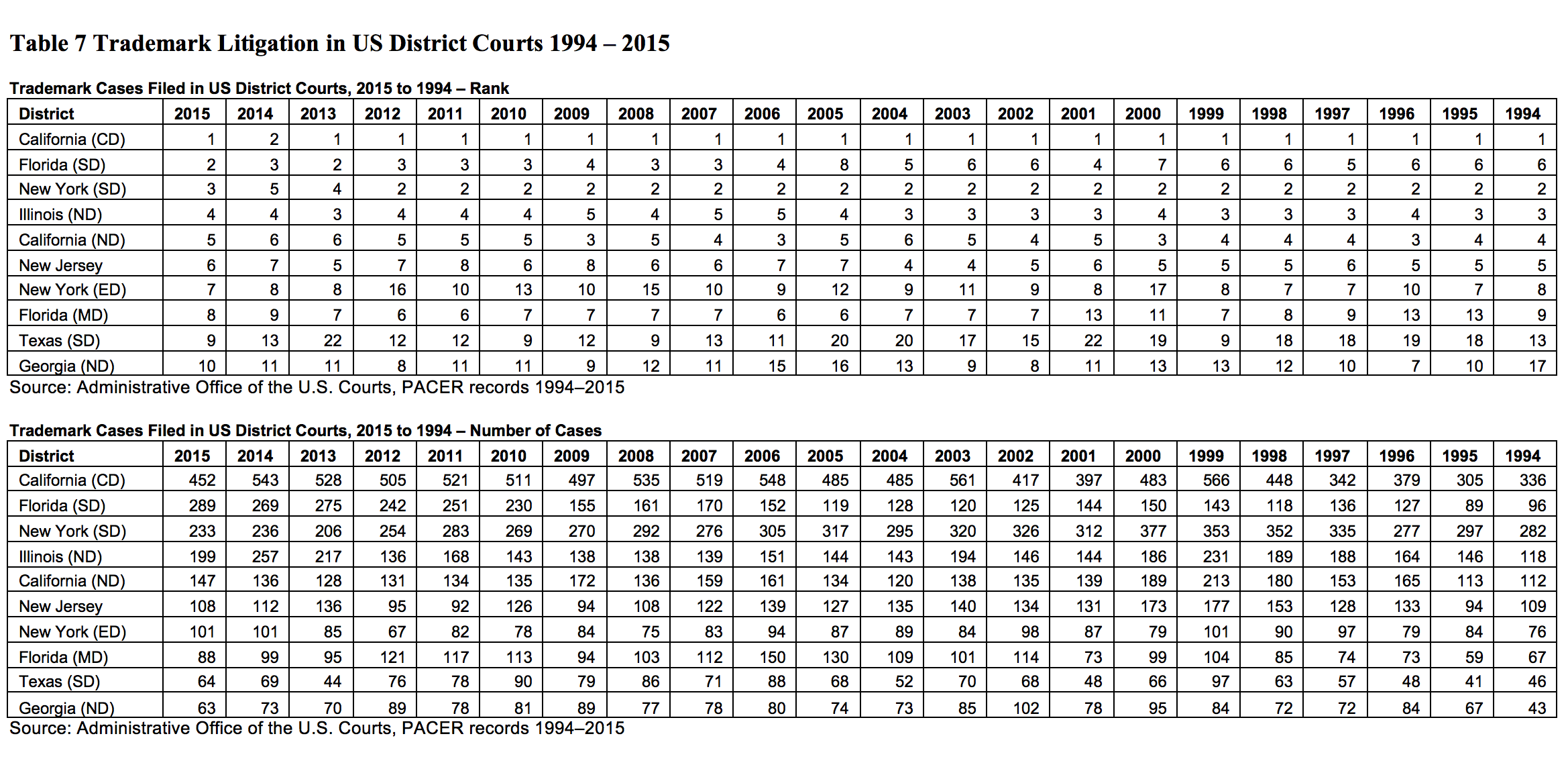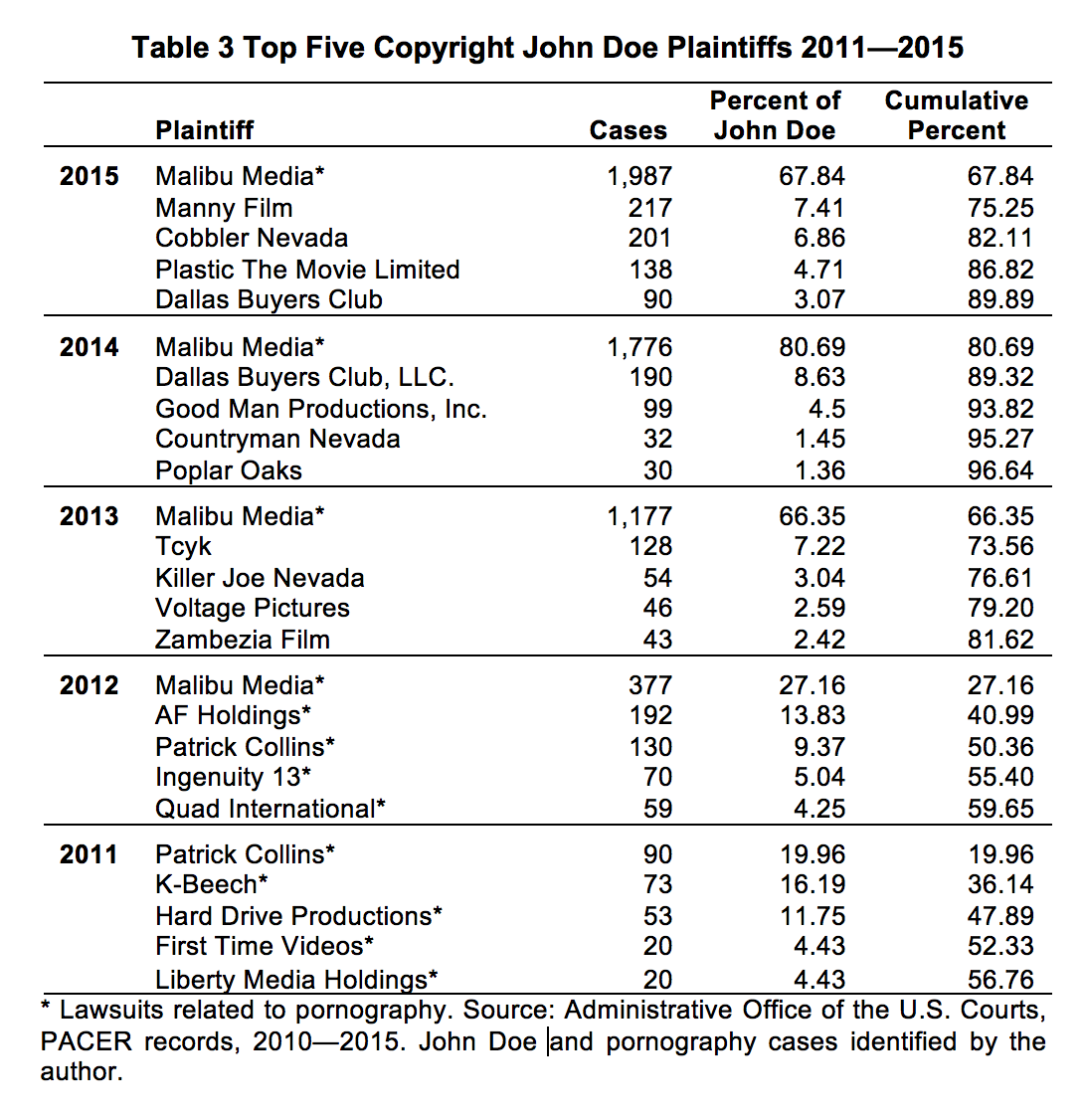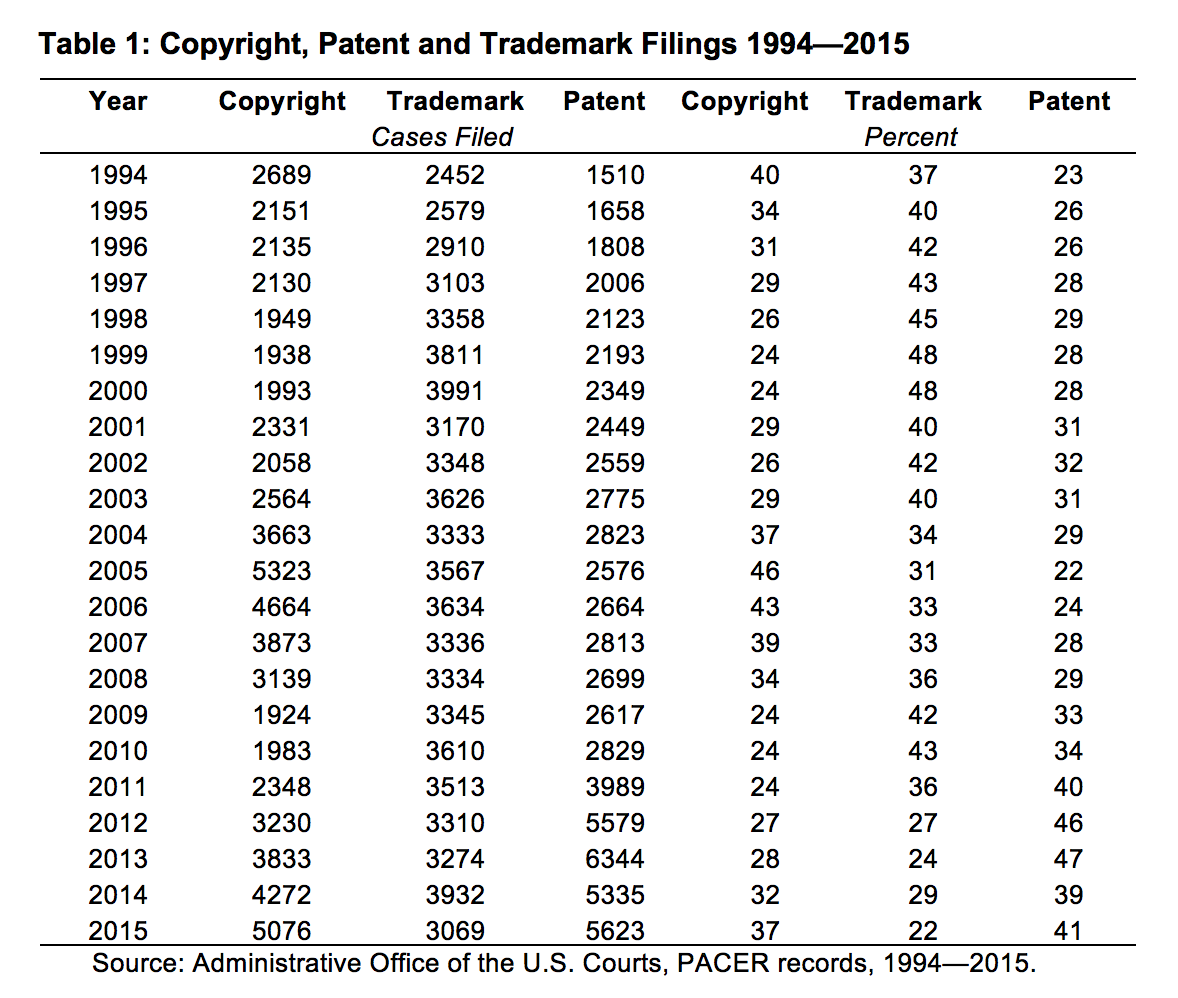Is the American Invents Act working?
Taking a look at the longterm trends in case filings and the number of unique defendants in each suit, it appears that the America Invents Act (“AIA”) corresponds with a significant reduction in the real rate of patent litigation and a leveling off of the nominal rate of patent litigation.
Patent Cases Filed and Estimated Number of Defendants, 1994—2015
However it is worth desegregating the data to compare the Eastern District of Texas to the rest of the United States. If you believe that most what takes place in Eastern District is patent trolling, then it looks like the AIA has not put a serious dent in that activity. The figure below compares the Eastern District of Texas to the rest of the United States in terms of the number of patent lawsuits filed per year (the bars) and also the estimated number of defendants per year (the scatterplot).
Patent Litigation in Eastern District of Texas, All Other Districts Source: Bloomberg Law, 1994–2015.
Bar chart depicts cases filed. Scatterplot depicts estimated number of defendants. Linear fit lines from 1994 to 2011 and 2011 to 2015.
Prior to 2011, the whole country witnessed a significant upward trend in patent suits and patent defendants. The rate of increase was much greater in the Eastern District of Texas, but the trendlines were pointed in the same direction for the district and the rest of the US. The period from 2011 to 2015 saw a marked divergence between the Eastern District of Texas and the rest of the country. In the Eastern District, the number of cases filed increased sharply and the trend (albeit with significant variation) was for the number of defendants to increase as well. In the rest of the US, the trendline for the number of defendants is significantly downward and there also appears to be a decreasing trend in terms of the number of suits filed.
These initial numbers might suggest that the patent reform measures introduced in the AIA have had a significant impact on the extent of patent litigation everywhere but the Eastern District of Texas. Another way to read these figures is as confirmation that the Eastern District of Texas’s concerted efforts at forum selling are continuing to be successful. These explanations are not mutually exlusive. The Eastern District of Texas accounted for just 7.33% of all patent cases filed between 2002 and 2010, but 26% from 2011 to 2015. It accounted for 16.39% of all patent defendants between 2002 and 2010, rising to 28.36% in the 2011-2015 period.
According to this superficial data (no attempt to control for marco-economic factors), etc, it looks like the AIA is having an effect, just not in the Eastern District of Texas.
For an extended discussion of the data used in this post, see my forthcoming article, IP Litigation in United States District Courts: 1994 to 2014 (Iowa Law Review, forthcoming 2016). You can download the underlying data on my website (under the publications+/data sets tab).


